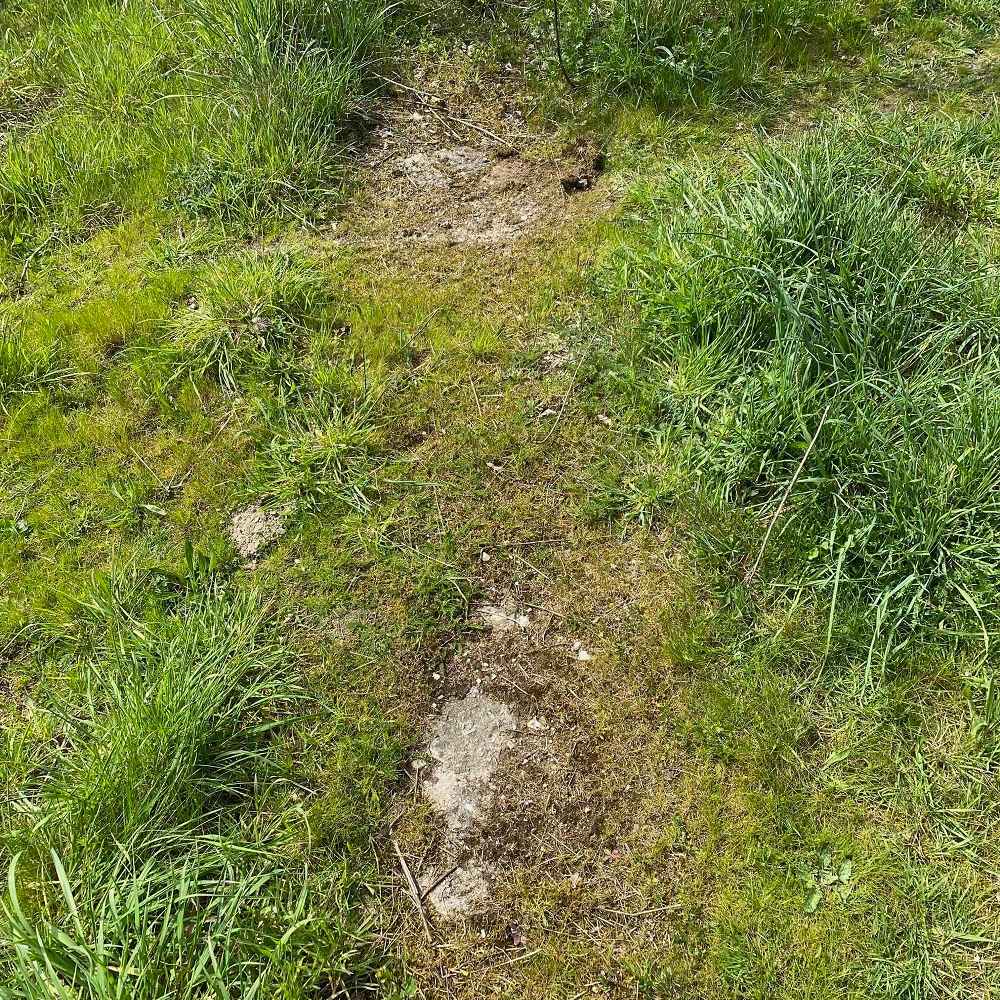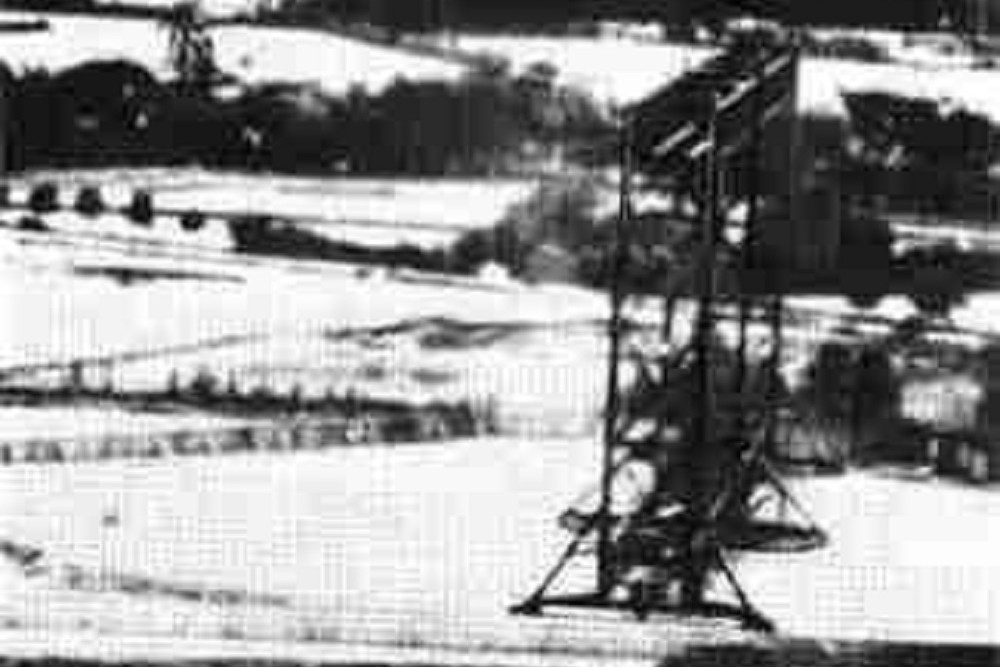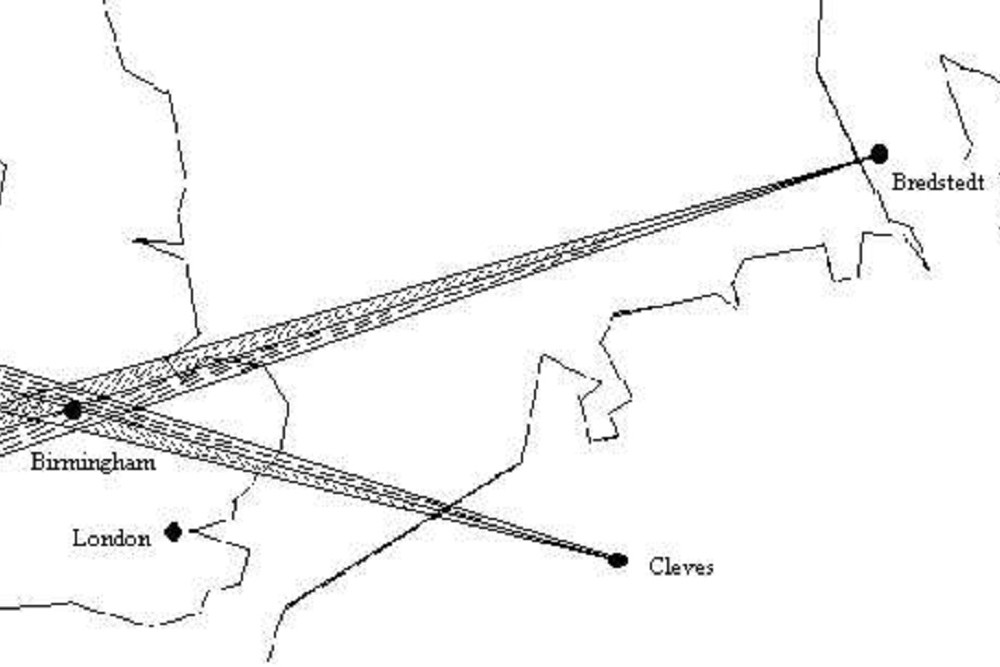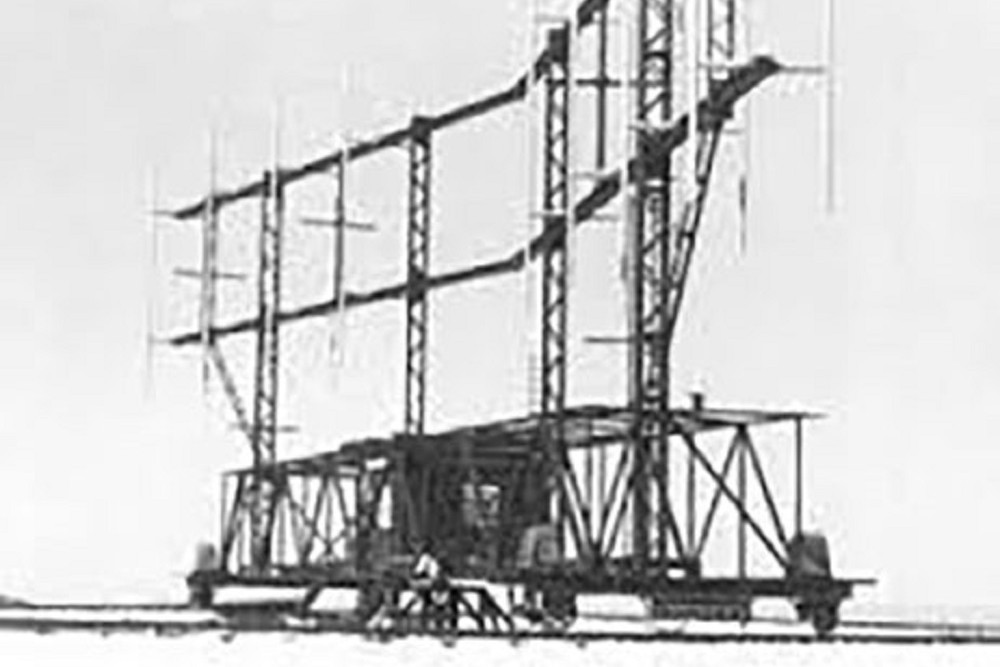Location Knickebein Radar Kleve
As early as the first months of 1940, the Germans had a system in use that could help bomber pilots on their way to England to find their targets with reasonable accuracy. The system used for this was the so-called Knickebein system. This consisted of two transmitters, each broadcasting a Morse code in a fairly narrow radius. The two Morse codes differed from each other, but at the point where the two beams meet, these Morse codes "blended" into one constant signal and that was exactly where the bombs had to be dropped. Knickebein yielded an accuracy of about 150 yards.
The antennas consisted of two high screens placed at an angle of 165 degrees from each other. Each screen consisted of 8 dipoles that emitted a signal that was between 30 and 33Mhz. The screens placed at an angle created a pencil beam of approximately 0.3 degrees. The transmitter had a power of 500 Watt, which resulted in a range of approximately 500 Km. The system could be rotated on circular rails to allow the two beams to cross at a different point. In this way every place in England could be 'designated'.
One transmitter was in northern Germany near Bredstedt, the other transmitter was west of Kleve.
The Knickebein system was discovered fairly quickly by the British. As early as June 5, 1940, the suspicion arose that the Germans were using a radio signal as a navigation aid. After Churchill was briefed on this, electronic countermeasures were immediately authorized. As a stop-gap measure, a medical radiation instrument was initially used that happened to work at exactly the right frequency. More specific jammers followed later. Knickebein was codenamed 'Headache' in England. The countermeasures were called 'Aspirin'.
Do you have more information about this location? Inform us!
Source
- Text: Ed Wijninga
- Photos: Ed Wijninga
Nearby
Museum
Point of interest
- Information Sign Bombing 07-02-1945 Kleve - Kleve (Donsbrüggen)
- Castle Schwanenburg Kleve - Kleve
- Bullet and Grenade Impacts Kleve - Kleve
Monument
- Memorial Victims Eastern Front German War Cemetery Donsbrüggen - Kleve (Donsbrüggen)
- Liberation Route Marker 091: Imprisoned slave labourers killed during bombing - Kleve (Donsbrüggen)
- War Memorial Donsbrüggen - Donsbrüggen
Cemetery
- German War Cemetery Kleve-Dönsbrügger Heide - Kleve (Donsbrüggen)
- German War Graves Kleve - Kleve
- Commonwealth War Cemetery Reichswald Forest - Kleve
Remembrance Stone
- Stumbling Stones Brabanterstrase 24 - Kleve
- Stumbling stones Römerstrasse 28 - Kleve
- Stumbling Stone Hagsche Poort 10 - Kleve
Fortification
- Fort Pannerden - S3a - Casemate 1 - Doornenburg
- Fort Pannerden - Szw Fr - Casemate 2 - Doornenburg
- Fort Pannerden - Szw Fr - Casemate 7 - Doornenburg









